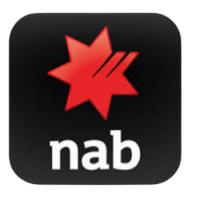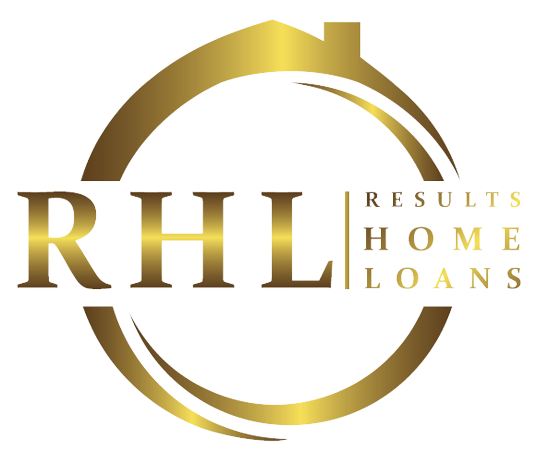Talking Concepts
June 2025
What's been going on this quarter?
Stay current with Concepts & Results and any updates in the market
Dates to Remember
30th June 2025 – End of Financial Year
1st July 2025 – Superannuation Guarantee Charge (SGC) increases to 12%
14th July 2025 – STP EOFY finalisation declarations lodged for employers
14th July 2025 – PAYG payment summaries available to employees via their myGov
28th July 2025 – Superannuation Guarantee Charge (SGC) for 1 April to 30 June payment due date
* Be sure to check your clearing house’s June processing cut-off if you want super payments to count as a 2024–25 tax deduction
28th August 2025 – Building & Construction Taxable Payments Annual Report (TPAR) due

Starting INTEREST RATES
RBA Drops rates by 0.25%!
4.94% p/a Fixed Rate
5.81% p/a Comparison Rate
Based on our lender panel, Bank Australia’s 3 Year Fixed Rate, provides the most competitive Interest Rate. Interest rates are correct as at 02/06/2025 and subject to change at anytime. The comparison rate is based on a loan amount of $500,000, over a 30 year term.
WARNING: This comparison rate is true only for the example given and may not include all fees and charges. Different terms, fees and other loan amounts might result in a different comparison rate. Terms, conditions, fees and charges apply and your full financial situation would need to be reviewed prior to acceptance of any offer or product.
Join our Facebook & Instagram groups
Stay connected and in the loop! Join our Facebook and Instagram groups for updates, tips, and a community that shares your interests. Don’t miss out—be part of the conversation!



Staff updates
Halima is on Maternity Leave
We’d like congratulate Halima on the birth of her baby boy on the 15/05/2025. We hope this special time is filled with love, rest, and precious moments with her growing family.
Welcome Angie!
We’re excited to share that Angie has joined our team part-time in the Financial Planning department. You may have already spoken with her as she’s hit the ground running!
Webinars Now Running Regularly
We’re now hosting regular webinars covering a range of financial planning and industry topics.
You can view upcoming sessions and catch up on past recordings on our website.
📢 Our next webinar:
10th June 2025: Save Tax Before June 30 – Proven Tax Strategies
Client Success Stories:
Louise G
What the Client Needed:
Our client, Louise G, was facing a potential Capital Gains Tax (CGT) bill of over $110,000 due to an incorrect calculation by her previous accountant. She needed expert advice to ensure the correct exemptions and deductions were applied before finalising her return.
What We Did:
Challenge 1: An incorrect formula had been used to calculate the CGT, ignoring the 6-year exemption.
Challenge 2: Louise was planning to claim an $85,000 superannuation deduction, but her actual taxable income was much lower.
Challenge 3: We needed to review, correct, and restructure her tax return to reduce her tax liability and optimise her super contributions.
Result:
Our senior accountant, Mey, carefully reviewed the details and applied the correct ATO guidance, including the 6-year exemption.
✅ The corrected CGT estimate brought the taxable amount down to just $12,154—a dramatic reduction from the original $110K.
✅ Mey identified that the full $85,000 super deduction wasn’t necessary and adjusted the claim to $49,114, reducing Louise’s taxable income to $0—resulting in $0 tax and $0 Medicare levy.
✅ She also saved Louise an additional $5,382.90 in super tax by converting the remaining $35,886 into non-concessional contributions.
Thanks to Mey’s expertise and sharp attention to detail, Louise walked away with significant tax savings and peace of mind. 🙌📉👏
📌 Super Guarantee Update
What Employers Need to Know
As a reminder, the Super Guarantee (SG) is the minimum amount employers must pay into eligible employees’ super funds. These payments must be made to the correct fund by the due dates each quarter, or you may incur the Super Guarantee Charge (SGC).
✅ Current SG Rate
From 1 July 2024 to 30 June 2025, the SG rate is 11.5%
From 1 July 2025, it will increase to 12%
🗓️ Quarterly Due Dates
SG contributions must be paid at least quarterly:
- Q1: 1 Jul – 30 Sep
- Q2: 1 Oct – 31 Dec
- Q3: 1 Jan – 31 Mar
- Q4: 1 Apr – 30 Jun
💰 Maximum Super Contribution Base (2024–25)
$65,070 per quarter
Max required SG payment: $7,483.05 per employee per quarter
Stay compliant and plan ahead for the upcoming rate increase in July 2025!

Sustainable Business Practices
A Key Focus For Owners

Sustainability is no longer optional—it’s a smart strategy for businesses of all sizes. Beyond helping the environment, sustainable practices can reduce costs, improve efficiency, and strengthen your brand reputation.
What Are Sustainable Business Practices?
Sustainable business practices aim to minimise environmental impact, support ethical operations, and ensure long-term viability. This includes reducing waste, conserving resources, and making socially responsible decisions—not just “going green,” but also ethical sourcing, fair labor, and community engagement.
Practical Ways to Be More Sustainable
- Reduce Energy Use
- Use LED lighting and energy-efficient appliances.
- Install motion-sensor lights.
- Encourage remote or hybrid work to cut office energy use.
2. Minimise Waste
- Go paperless and recycle properly.
- Use reusable supplies and eco-friendly packaging.
3. Source Sustainably
- Choose ethical suppliers and fair-trade goods.
- Buy local to cut down on transport emissions.
4. Conserve Water
- Install low-flow fixtures.
- Collect rainwater and promote water-saving habits.
5. Embrace Ethical Labor
- Offer fair pay, safe conditions, and flexible work options.
- Support diversity and inclusion.
6. Support the Community
- Donate locally, organise clean-ups, and collaborate with nearby businesses.
7. Cut Carbon Emissions
- Offset carbon, invest in renewables, and promote greener commuting.
- The Benefits
- Lower Costs through reduced energy and waste.
- Stronger Reputation with eco-conscious customers.
- Compliance with environmental regulations.
- Resilience and long-term growth.
Sustainability isn’t just for big corporations—it’s achievable and impactful for all businesses. Whether you run a café, office, or retail store, small changes can lead to big result
7 Red Flags In A Business That Could Jeopardies Its Success
Running a business isn’t easy—but some warning signs may point to deeper issues that threaten long-term success. Whether you’re an owner, investor, or employee, recognising these red flags early can make all the difference.
Cash Flow Issues
Struggling to pay bills, staff, or suppliers on time? Ongoing cash flow problems may signal poor financial management, high debt, or falling sales. Regular cash flow reviews and forecasting are crucial.
High Staff Turnover
Losing employees frequently can indicate deeper issues like poor leadership, low morale, or a toxic work environment. Investigate the causes and prioritise workplace culture and staff retention.
Falling Sales or Customer Loss
A steady decline in sales or customer engagement could reflect poor service, weak marketing, or rising competition. Reviewing sales data and collecting customer feedback can help identify needed changes.
Overreliance on One Client or Supplier
Depending heavily on one client or vendor puts your business at risk if the relationship ends. Diversify your revenue and supply chain to stay resilient.
Poor Processes and Systems
Missed deadlines, confusion about responsibilities, and lack of structure suggest internal inefficiencies. Clear processes and documented workflows are essential for smooth, compliant operations.
Mounting Debt
High debt levels or frequent use of short-term finance can signal financial distress. Late payments or maxed-out credit lines should prompt immediate review of your financial strategy.
Legal or Compliance Issues
Frequent legal disputes, unpaid taxes, or regulatory breaches can damage your reputation and finances. Staying compliant with laws and regulations protects your business from costly consequences.
Stay Ahead of the Warning Signs
Catching red flags early allows you to take corrective action before problems escalate. Regular reviews, strong communication, and sound management can help you steer your business toward long-term stability.
Need a fresh perspective? Sometimes an outside eye can spot what’s hidden in plain sight. Talk to one of our business advisers today to see how they can help.
What Is Unit Pricing in Super Funds?
Ever wondered why your super balance changes even when you haven’t made any transactions? It’s not just due to fees or contributions—it’s also about how your super fund calculates investment returns, often through a method called unit pricing.
How Unit Pricing Works
Super funds assign a unit price to each investment option. When the value of investment assets changes, so does the unit price:
- If asset values go up, the unit price increases.
- If they go down, the unit price decreases.
Each time you or your employer makes a contribution, you’re buying units at that day’s price. When money leaves your fund (for fees, insurance, or investment switches), units are sold at the current price.
Why Your Balance Might Look Off
Unit prices are usually updated at the end of each business day, so your online balance might lag behind by a day. This also means if you switch investment options, the unit price used is from the day your request is processed—not the day you submitted it.
Buy vs Sell Prices
Some funds have different prices for buying and selling units:
- Buy price: Applied when you invest.
- Sell price: Used for withdrawals or switches.
The difference is called the buy/sell spread, which helps cover transaction costs inside the fund.
How Funds May Reduce Costs
Some super funds avoid buy/sell spreads by spreading transaction costs across all members or reallocating units internally—this can help keep fees lower overall.
Key Takeaways:
- Your super balance moves with investment market changes.
- Unit prices are used to track the value of your investment.
- Some funds apply a buy/sell spread, which affects your balance.
- Online balances may reflect a previous day’s prices.
- Always check your fund’s pricing method before making changes.
Understanding unit pricing helps you make smarter super decisions and gives you more confidence in your retirement savings.
Need help? Speak with a licensed adviser or contact your super fund directly.
Understanding Apartment Depreciation in Australia:
A Comprehensive Guide
Vacant Residential Land Tax:
What You Need to Know
✍️SRO
If you own residential land in Victoria, it’s important to understand whether you’re liable for the Vacant Residential Land Tax (VRLT). Here’s a simplified breakdown of when the tax applies, the key exemptions, and what you need to do.
🏡 Who’s Exempt?
If your land is already exempt from regular land tax—such as your Principal Place of Residence (PPR)—it’s also exempt from VRLT.
However, other properties may still be subject to VRLT unless you qualify for one of the following additional exemptions. Even if you believe you qualify, you must notify the State Revenue Office (SRO) and apply through the VRLT portal.
🔍 What Is Residential Land?
VRLT applies to land that:
- Has a home suitable for residential use.
- Has a home under construction or renovation.
- Has a home that is uninhabitable.
It does not apply to:
- Unimproved land with no home.
- Hotels, aged care facilities, retirement villages.
- Land in alpine resorts like Mt Buller or Falls Creek.
⏳ When Is Land Considered Vacant?
- A livable home was not occupied for 6+ months in the previous calendar year.
- A home has been under construction for 2+ years since the building permit.
- A home has been uninhabitable for 2+ years.
✅ Key VRLT Exemptions
- Change of Ownership
Land sold and settled during the calendar year is exempt the following year.
Example: A property sold in 2024 and settled before Dec 31 is exempt in 2025.
- Land Becomes Residential
If land becomes residential during the year, it’s exempt in the following year.
2-Year Rule (from 2022): Applies if ownership hasn’t changed and land wasn’t used.
3-Year Rule (from Jan 2025): Extends the exemption if the land remains unsold but you’ve made genuine efforts to sell.
3. Holiday Home Use
Exemption applies if the property is used for at least 4 weeks/year by the owner or a relative, and the owner has a separate PPR in Australia.
From Jan 2025: Relatives can meet the occupancy requirement.
Applies to certain trust structures and corporate owners (with conditions).
Only one holiday home exemption per ownership group per year.
- Deceased Estates
The holiday home exemption can continue for up to 3 years after death of the owner or corporate shareholder if conditions are met.
- Work Accommodation
If the owner occupies the property for 140+ days/year to attend work in Victoria and has a PPR elsewhere in Australia, the exemption applies.
Corporations or organisations cannot claim this exemption.
- Employee Use
If an employee occupies the property as their PPR for 6+ months/year, the land is not considered vacant.
Short-term or casual use does not qualify unless under a genuine lease.
📅 What Happens Next?
Assessment notices are sent between April–June 2025 if you’re liable.
If you’ve applied for an exemption, you’ll be notified before assessment.
If approved, no assessment will be issued unless you own other taxable land.
📌 Action Required
Notify the SRO—even if you believe your property is exempt.
Apply for exemptions via the VRLT portal.
Ensure accurate and timely reporting to avoid penalties.
Need help navigating VRLT or determining if your land qualifies for an exemption? Get in touch with our team—we can guide you through the process and make sure you’re covered.
What to expect from the new government
✍️ The Adviser

Following a landslide victory in the 2025 federal election, Anthony Albanese and the Australian Labor Party have secured a second consecutive term, with over 85 seats projected. In his victory speech, Albanese emphasized values of fairness, opportunity, and national unity, pledging to govern for all Australians.
Housing Policy Highlights:
Housing affordability was a major election issue, with Labor committing $33 billion to housing initiatives, including:
Expanding the Home Guarantee Scheme for first home buyers.
Launching the Help to Buy Scheme, with higher income caps and a $6.3 billion budget.
Banning foreign purchases of existing homes for two years (from April 2025).
Fast-tracking 6,000 tradies’ qualifications to boost construction capacity.
Investing in social and affordable housing, with:
$10 billion via the Housing Australia Future Fund.
$9.3 billion for homelessness and social housing maintenance.
$1.5 billion for planning and infrastructure.
$3 billion in New Homes Bonus incentives.
$4.5 billion for infrastructure backlog relief.
Rent assistance increases by 45% for 1 million households.
Build-to-rent reforms aiming to deliver 80,000 new rental homes in 10 years.
Apprentice and employer incentives to attract more workers to the housing sector.
Industry View:
Mortgage and broking experts welcome the focus on affordability and housing supply, but caution that meaningful results will take time. Demand-side support helps in the short term, but long-term solutions will depend on sustained supply-side reforms.
Borrowers owe banks more than $2.3tn in mortgages
✍️ The Adviser
Home loan debt in Australia has reached an all-time high of $2.3 trillion, according to new data from APRA. This figure represents a 0.44% increase from February to March 2025 and a 5.55% rise over the past year, driven by soaring property prices (median house price: $825,349).
Key Highlights:
Owner-occupier loans: $1.56 trillion
Investment loans: $0.73 trillion
Top lenders:
Commonwealth Bank (CBA): $583.3B (+6.13% YoY)
Westpac: $483.5B (+3.2% YoY)
NAB: $328.7B (+3.18% YoY)
ANZ: $312.6B (+5.88% YoY)
Macquarie: $136.7B (+18.18% YoY)
Fastest growth: Macquarie Bank, Bank of China, and Defence Bank all saw strong organic growth.
Market Trends:
Refinancing is up 12.5% YoY, with nearly 120,000 new loans settled in Q1 2025.
$80.2 billion in new loans settled in the quarter, most for residential property.
Growth is partly attributed to interest rate cuts by the Reserve Bank of Australia in February and optimism about further reductions.
With expectations of another rate cut and major housing policy initiatives underway, 2025 is shaping up to be another record year for mortgage lending in Australia.




Is Your Will Up to Date? Protect Your Family & Assets Today!
If you don’t have a will, or it’s outdated, your family could face unnecessary stress and costs.
Financial Service Packages
Time to Review Your Financial Strategy?
We’re now inviting clients to lock in their 2026 Financial Review Service Package, tailored to your portfolio.
Real Resutls
A long-term client using our Gold Package achieved an average 17.52% annual return!
Bonus
Subscribe before 30 June 2025 and your package fee may be fully tax deductible for this financial year
Bronze Package
For portfolios $50k–$300k-
One annual financial review with personalised strategy check-in
-
Full review of investments, debt, superannuation & estate planning
-
5-Minute Financial Health Check
-
Astute Wheel data storage + vault access
-
Access to exclusive investment webinars & guest speaker events
-
Session summary, agenda notes & video recording
-
10% off advice, admin, and accounting fees
Silver Package
For portfolios $300k–$700k-
Includes all Bronze benefits
-
Unlimited phone support throughout the year
-
Two Core Logic property valuations & investment portfolio reports annually
-
Additional Goals & Health Check reports
-
FREE second catch-up appointment (valued at $440)
-
Complimentary modelling for financial projections
-
25% off advice, admin, and accounting fees
Gold Package
For portfolios $700k+-
Includes all Silver & Bronze benefits
-
Three detailed valuations & reporting updates per year
-
Higher frequency of Health & Goals reports
-
Premium access to webinars and boardroom strategy sessions
-
Enhanced tax planning, including CGT and super contribution strategies
-
Additional estate planning review with implementation support
-
50% off advice, admin, and accounting fees
Proactive Tax Planning Starts With You
As the end of the financial year (EOFY) approaches, it’s time to get your business records in order and ensure everything is ready for tax time.
EOFY can feel overwhelming, but with a bit of preparation and guidance, you can wrap things up smoothly and even find opportunities to strengthen your financial position for the year ahead.
Here’s a step-by-step guide to help you prepare:
- Reconcile Your Accounts
Start by reviewing your accounting software and ensuring all bank transactions, invoices, and payments are up to date. Double-check that your bank statements reconcile with your accounting records. If anything looks out of place, now’s the time to investigate and fix it.
- Organise Your Paperwork
Whether you keep records digitally or in hard copy, make sure all receipts, invoices, and financial documents are properly filed and accessible. This includes:
- Expense receipts
- Sales records
- Loan documents
- Asset purchase records
- Contractor invoices
Your accountant will need these to finalise your accounts and claim eligible deductions.
- Review Your Debtors and Creditors
Take stock of your outstanding invoices. If clients owe you money, follow up and try to collect payment before EOFY. At the same time, review any bills or invoices you haven’t yet paid – these may be deductible this financial year if paid before 30 June.
- Check for Tax-Deductible Opportunities
There may still be time to bring forward expenses or make additional purchases before 30 June. Some examples include:
- Prepaying rent, insurance or subscriptions
- Purchasing tools, equipment, or office supplies
- Making superannuation contributions for yourself or employees
Your accountant can guide you on what’s eligible and beneficial based on your cash flow.
- Stocktake and Asset Review
If you sell physical products, a stocktake is essential. Note any slow-moving, obsolete, or damaged stock. Similarly, review your asset register – are there any outdated or scrapped items that can be written off?
- Superannuation and Payroll Reporting
Ensure all superannuation guarantee contributions are paid on time to claim deductions. Also, make sure your Single Touch Payroll (STP) reporting is up to date. You’ll need to finalise your payroll for the year and provide income statements to your employees through the ATO system.
- Meet with Your Accountant
EOFY is a perfect time for a financial health check. Book a meeting with your accountant to:
- Review your tax position.
- Discuss any changes in business structure.
- Plan for the next financial year.
- Explore strategies to minimise tax and improve cash flow.
We can also help you avoid common EOFY pitfalls and ensure your reporting is accurate and compliant.
EOFY doesn’t have to be stressful. With some planning and support from your accountant, you can close out the year with confidence and clarity. Even better, EOFY prep often reveals insights to help your business grow stronger in the new financial year.

The Instant Asset Write-Off:
A Small Business Tax Perk Worth Knowing About
If you’re running a small business in Australia, you’ve probably heard of the Instant Asset Write-Off (IAWO)—especially around tax time. But what exactly is it, and how can it help your business?
Let’s break it down.
⚙️ What Is the Instant Asset Write-Off?
The IAWO is a tax rule that allows eligible small businesses to immediately deduct the full cost of certain business assets, instead of spreading the deduction out over several years through depreciation.
So whether you’re buying a new laptop, second-hand tools, or equipment for your workshop, you might be able to claim the full cost in your tax return—provided it meets the eligibility rules.
✅ Who Can Use It?
To be eligible, your business must:
- Have an aggregated turnover of less than $10 million, and
- Use the simplified depreciation rules for small businesses.
- The asset must also be used or ready for use in the same financial year you’re claiming the deduction.
💲 What’s the Threshold?
From 1 July 2023 to 30 June 2025, the write-off threshold is $20,000 per asset.
That means you can:
- Instantly write off multiple assets, as long as each one costs less than $20,000 (before GST).
- Claim both new and second-hand items.
The government recently announced a 12-month extension to this measure, making it even more valuable for upcoming purchases.
🧰 Real-World Example
Let’s say you run a small plumbing business and buy a second-hand ute for $18,000 in August 2024. If your business meets the eligibility criteria and you start using the vehicle in that same year, you can write off the full $18,000 in your 2024–25 tax return.
That’s a substantial deduction that could help lower your tax bill and boost your cash flow.
⚠️ A Few Things to Keep in Mind
Asset cost must be under $20,000 (excluding GST if registered).
You can only claim the business-use portion of the asset.
(Example: A $2,000 laptop used 80% for work = $1,600 deduction.)
Some assets don’t qualify, like capital works or certain types of software.
💡 Why It Matters
The Instant Asset Write-Off is one of the simplest and most effective tax incentives for small business owners. It rewards investment in business growth and helps manage cash flow—particularly valuable in tighter economic times.
📌 In a Nutshell
Thinking of upgrading your tools, buying a new computer, or investing in equipment? The IAWO might make it easier to say yes.
Just remember to:
- Keep detailed purchase records,
- Stay up to date with ATO guidelines, and
- Chat with your accountant or tax adviser to make sure you’re making the most of it.
Want tailored advice?
Our expert tax team is here to help you take full advantage of the instant asset write-off and other small business tax incentives.
2025 Cancer Council Fundraising Initiative
In previous years, C&R has supported the Cancer Council with a single annual fundraiser. This year, we’re taking it further by hosting multiple smaller fundraising events throughout 2025, with the goal of raising $6,000 by December 31st. 💛
Our planned events include Australia’s Biggest Morning Tea 🍰, Dry July 🚫🍷, Daffodil Day 🌼, and more! All can join our Cancer Council team and donate through a dedicated link, and we encourage everyone—colleagues, family, and friends—to participate as events are announced.
Cancer has personally impacted many of us, and we’re committed to doing what we can to support research, prevention, and those affected. Together, we can make a difference! 💙✨
Progress raised


By electronic signing you've helped save...
323m
KG of wood
100 Central Parks
7.2bn
L of Water
2,886 Olympic Pools
727m
Kg of CO2
1,778 Fire Tucks
47.7m
KG of Waste
3,754 Garbage Trucks
See our previous newsletters below
Visit us
Want to discuss the above face to face? Come visit our specialised team members to find out more.
Call us
Have any questions? Further discussions on the above can be may be held over a telephone appointment.
Contact us
For any and all queries regarding the above, you may contact Concepts & Reuslts by emailing us
DISCLAIMER: Whilst all care is taken in the preparation of the material in this newsletter, the information provided is of a general nature and individuals should seek advice as to their own specific needs. Accordingly, no responsibility for errors or omissions is accepted by Concepts & Results group of companies or any member or employee.










